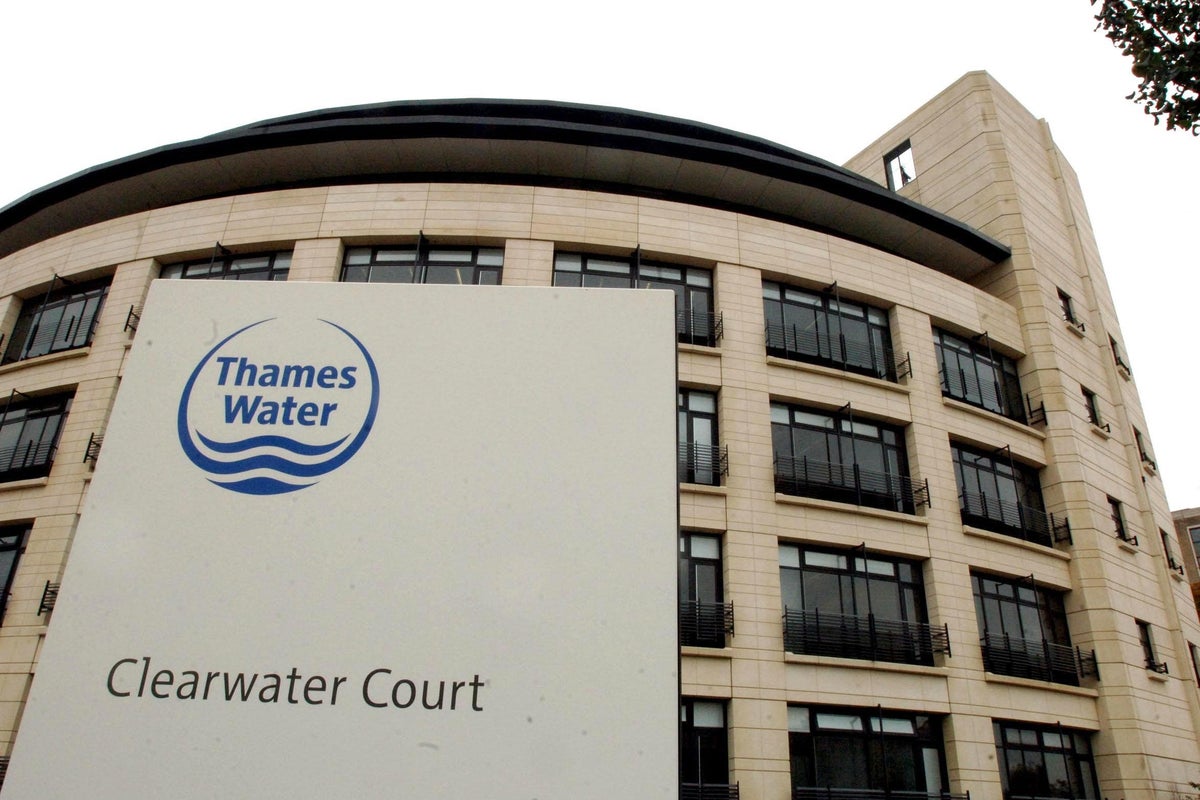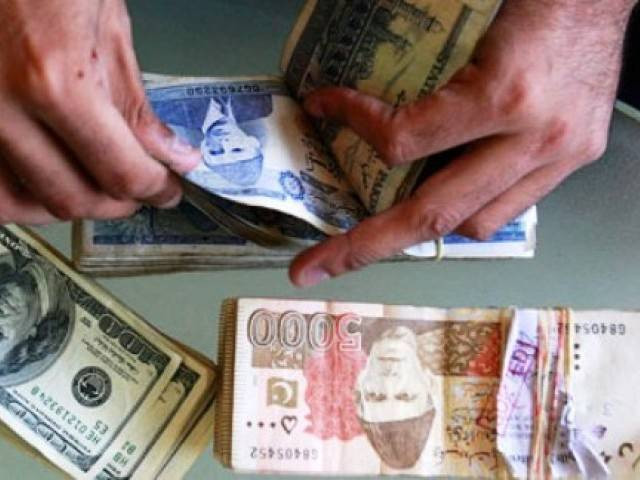Business
Thames Water agrees new £122m fine payment plan

Troubled utility giant Thames Water has agreed to pay an initial £24.5 million of its record £122.7 million in fines by the end of September, under a payment plan sanctioned by regulator Ofwat.
The industry watchdog, which levied the penalties in May for failures concerning sewage treatment and the payment of dividends, stipulated that a fifth of the total fines would be due in this first instalment.
Thames Water has stated that these fines will not be covered by customer bills.
However, the payment of the remaining 80 per cent is contingent on the financial stability and future of the debt-laden water supplier, which is currently teetering on the brink of potential temporary nationalisation.
This means the majority of the fines may not be settled for up to five years.
Ofwat confirmed that the outstanding amount will be paid either 30 calendar days after Thames Water secures a rescue financing deal and demonstrates sufficient cash liquidity, or, if the company is placed into a special administration regime by the Government, 30 calendar days after it exits the insolvency process.
The regulator has set a final “backstop date” of March 31, 2030, for the full payment of the remaining penalties.
The fines were originally due by August 20, but Thames Water requested a revised payment schedule citing its ongoing financial difficulties.
Campaign group River Action slammed it as a “sweetheart deal”.
James Wallace, chief executive of River Action, said: “It is outrageous that Thames Water has been allowed to kick its fine down the road.”
Lynn Parker, senior director of enforcement at Ofwat, said: “This payment plan continues to hold Thames Water to account for their failures but also recognises the ongoing equity raise and recapitalisation process.
“Our focus remains on ensuring that the company takes the right steps to deliver a turnaround in its operational performance and strengthen its financial resilience to the benefit of customers.”
Ofwat announced the fines in May after it said an investigation into Thames Water’s sewage treatment works found “a series of failures by the company to build, maintain and operate adequate infrastructure”.
The utility giant was ordered to pay £104.5 million for the sewage probe, plus £18.2 million for breaking rules over dividend payments, the industry’s first dividend-related fine.

Ofwat pointed to nearly £170 million worth of dividend payments by Thames in October 2023 and March 2024, which the watchdog said were not justified.
But the fines come at a time when Thames is already under extreme financial stress and its chief executive Chris Weston has previously told MPs that if the company faced fines that were too high, it would struggle to get new investment.
Thames Water is feared to be edging closer to a potential temporary nationalisation after the Government appointed insolvency specialists FTI Consulting earlier this month to step up contingency planning in case the supplier collapses.
These plans could see Britain’s biggest water firm placed into a special administration regime (SAR), meaning it would be put into an insolvency process.
Thames Water, which has 16 million customers, remains locked in talks over a rescue funding deal with a number of senior creditors.
But it recently raised doubts over whether the creditors’ refinancing and restructuring plans could be completed, which could ultimately result in a state rescue deal.
In a statement on Wednesday, Thames Water said: “The company continues to work closely with stakeholders to secure a market-led recapitalisation which delivers for customers and the environment as soon as practicable.”
Business
Trade talks: India, EU wrap up 14th round of FTA negotiations; push on to seal deal by December – The Times of India

India and the 27-nation European Union (EU) have concluded the 14th round of negotiations for a proposed free trade agreement (FTA) in Brussels, as both sides look to resolve outstanding issues and move closer to signing the deal by the end of the year, PTI reported citing an official.The five-day round, which began on October 6, focused on narrowing gaps across key areas of trade in goods and services. Indian negotiators were later joined by Commerce Secretary Rajesh Agrawal in the final days to provide additional momentum to the talks.During his visit, Agrawal held discussions with Sabine Weyand, Director General for Trade at the European Commission, as both sides worked to accelerate progress on the long-pending trade pact.Commerce and Industry Minister Piyush Goyal recently said he was hopeful that the two sides would be able to sign the agreement soon. Goyal is also expected to travel to Brussels to meet his EU counterpart Maros Sefcovic for a high-level review of the progress made so far.Both India and the EU have set an ambitious target to conclude the negotiations by December, officials familiar with the matter said, PTI reported.Negotiations for a comprehensive trade pact between India and the EU were relaunched in June 2022 after a hiatus of more than eight years. The process had been suspended in 2013 due to significant differences over market access and tariff liberalisation.The EU has sought deeper tariff cuts in sectors such as automobiles and medical devices, alongside reductions in duties on products including wine, spirits, meat, and poultry. It has also pressed for a stronger intellectual property framework as part of the agreement.For India, the proposed pact holds potential to make key export categories such as ready-made garments, pharmaceuticals, steel, petroleum products, and electrical machinery more competitive in the European market.The India-EU trade pact talks span 23 policy chapters covering areas such as trade in goods and services, investment protection, sanitary and phytosanitary standards, technical barriers to trade, rules of origin, customs procedures, competition, trade defence, government procurement, dispute resolution, geographical indications, and sustainable development.India’s bilateral trade in goods with the EU stood at $136.53 billion in 2024–25, comprising exports worth $75.85 billion and imports valued at $60.68 billion — making the bloc India’s largest trading partner for goods.The EU accounts for nearly 17 per cent of India’s total exports, while India represents around 9 per cent of the bloc’s overall exports to global markets. Bilateral trade in services between the two partners was estimated at $51.45 billion in 2023.
Business
Telcos network costs rise: Gap between expenditure and revenue exceeds Rs 10,000 crore; COAI flags rising network investment burden – The Times of India

The gap between telecom operators’ network expenditure and revenue continues to widen, prompting industry body COAI to defend calls for higher mobile tariffs, citing the increasing financial burden of network deployment on service providers.Speaking at the India Mobile Congress, Cellular Operators Association of India (COAI) Director General, SP Kochhar, told PTI that while the government has provided significant support to telecom operators through policies such as the right of way (RoW), several authorities continue to levy exorbitant charges for laying network elements.“Earlier, the gap until 2024 for infrastructure development and revenue received from tariffs was around Rs 10,000 crore. Now it has started increasing even further. Our cost of rolling out networks should be reduced by a reduction in the price of spectrum, levies etc. The Centre has come out with a very good ROW policy. It is a different matter that many people have not yet fallen in line and are still charging extremely high,” Kochhar said.He also defended the recent cut in data packs for entry-level tariff plans by select operators, stressing that the move was necessary given competitive pressures.Kochhar pointed out that competition among the four telecom operators remains intense, and there has been no significant trend suggesting that consumers are shifting towards low-cost data options.“There is a need to find ways to make high network users pay more for the data. Seventy per cent of the traffic which flows on our networks is by 4 to 5 LTGs (large traffic generators like YouTube, Netflix, Facebook etc). They pay zero. Nobody will blame OTT but they will blame the network. Our demand to the government is that they [LTGs] should contribute to the development of networks,” Kochhar said.He added that the investments made by Indian telecom operators are intended for the benefit of domestic consumers and are not meant to serve as a medium for profit for international players who do not bear any cost.
Business
Indias Real Estate Equity Inflows Jump 48 Pc In Q3 2025: Report

NEW DELHI: Equity investments in India’s real estate sector jumped 48 per cent year-on-year to $3.8 billion in the July-September period (Q3), a report said on Friday. This growth in inflow was primarily fuelled by capital deployment into land or development sites and built-up office and retail assets, according to the report by real estate consulting firm CBRE South Asia.
In the first nine months of 2025, the equity investments increased by 14 per cent on-year to $10.2 billion — from $8.9 billion in the same period last year.
The report highlighted that land or development sites and built-up office and retail assets accounted for more than 90 per cent of the total capital inflows during Q3 2025.
On the category of investors, developers remained the primary drivers of capital deployment, contributing 45 per cent of the total equity inflows, followed by Institutional investors with a 33 per cent share.
CBRE reported that Mumbai attracted the highest investments at 32 per cent, followed by Pune at around 18 per cent and Bengaluru at nearly 16 per cent.
Anshuman Magazine, Chairman and CEO – India, South-East Asia, Middle East and Africa, CBRE, said that the healthy inflow of domestic capital demonstrates the sector’s resilience and depth.
“In the upcoming quarters, greenfield developments are likely to continue witnessing a robust momentum, with a healthy spread across residential, office, mixed-use, data centres, and I&L sectors,” he added.
In addition to global institutional investors, Indian sponsors accounted for a significant part of the total inflows.
“India’s ability to combine strong domestic capital with global institutional participation will remain a key differentiator in 2026 and beyond,” added Gaurav Kumar, Managing Director, Capital Markets and Land, CBRE India.
CBRE forecasts a strong finish for the investment activity in 2025, fuelled by capital deployment into built-up office and retail assets.
For the office sector, the limited availability of investible core assets for acquisition indicate that opportunistic bets are likely to continue gaining traction, the report noted.
-

 Tech6 days ago
Tech6 days agoI’ve Tested Countless Mesh Systems. Here Are the Routers I Recommend
-

 Tech1 week ago
Tech1 week agoAmazon Prime Big Deal Days Is Next Week, but We Already Found 40 Early Deals
-

 Tech1 week ago
Tech1 week agoAll Hail the Surprisingly Versatile Packing Cube! These Are Our Favorites
-

 Tech6 days ago
Tech6 days agoJony Ive Says He Wants His OpenAI Devices to ‘Make Us Happy’
-

 Tech1 week ago
Tech1 week agoAI in an ‘industrial bubble’ but will benefit society: Bezos
-

 Tech1 week ago
Tech1 week agoAmazon is overhauling its devices to take on Apple in the AI era
-

 Business7 days ago
Business7 days agoInvestors are packing up; Pakistan must ask why | The Express Tribune
-

 Tech1 week ago
Tech1 week agoCombat Dry Indoor Winter Air With a New Humidifier





